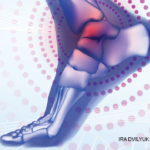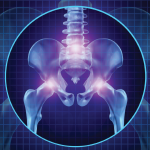BOSTON—Most people give little thought to how they walk, but patients with arthritis who have joint problems may face significant challenges in maintaining proper walking techniques.
There are a number of both simple and old-fashioned as well as high-tech ways to analyze the gait of patients who have pain during walking, according to a pair of speakers at the ACR/ARHP Annual Scientific Meeting in Boston last November in a session called “Gait Analysis: Hip, Knee, and Foot Effects on Gait and How to Assess Them.”
“Gait involves everything from our heads to our toes,” says Carol Oatis, PT, PhD, professor of physical therapy at Arcadia University in Glenside, Pa. “Gait is purposeful.” Physicians can offer strategies that will not only help patients walk where they need to go, but will also leave them with enough energy to complete their tasks and make the return trip.
Gait, Piece by Piece
Gait is split into two main phases: swing and stance. During the swing phase, the body moves a leg forward in anticipation of planting that leg to support the other leg’s upcoming swing phase. In the stance phase, one or both legs must support the entire weight of the body. There is a brief period of double support—where both legs share support of the body—at two points during each gait cycle.
The stance phase absorbs the impact shock from the body’s weight hitting the ground. It is not enough to merely keep the body upright in this phase, because the legs must also be positioning themselves to move forward in the next cycle of gait, says K. Douglas Gross, ScD, MPT, a research technologist in the clinical epidemiology research and training unit at Boston University. During stance, the heel is the first part of the leg to make contact with the ground, followed by the rest of the foot. As the body propels itself forward, the heel pushes off before the toe leaves the ground in anticipation of the next step.
Challenges that can impair the stance phase include problems in lower extremity strength, coordination, motor control, balance, and joint mobility and alignment. When a patient complains of pain when walking, it is important to determine at what phase of gait the problem arises, says Dr, Oatis. The problem could occur when the foot is hitting the ground and absorbing shock, or when the foot is pushing off the ground as momentum is transferred.

